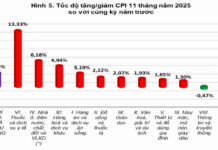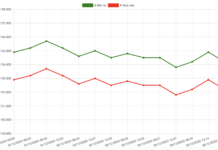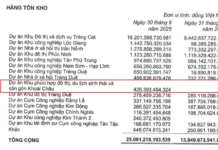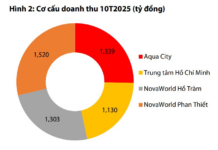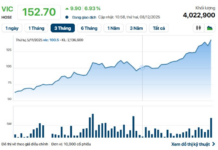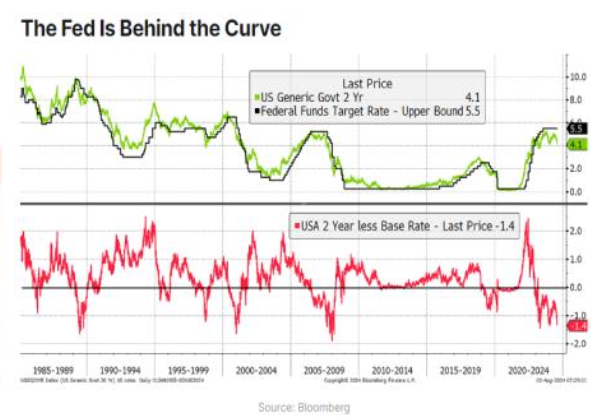Responding to the question, Mr. Nguyen Viet Quang, Director of Business at Yuanta Securities, said: ”
There is a very high probability that the market has bottomed out at this stage.
When the market bottoms out, we tend to favor blue-chip stocks with strong fundamentals that have also discounted towards strong support levels and show signs of bottoming out before the broader market.
Mr. Quang elaborated, “If we look at the history of the stock market, we will see that when the market bottoms out, capital tends to flow into large-cap stocks with significant potential, enabling these stocks to exhibit strong upward momentum.”
”
I pay particular attention to this group of stocks because blue-chip stocks, especially those with strong fundamentals, tend to attract the interest of many large investors. As a result, when the stock price undergoes a significant correction, it attracts strong buying interest, thus helping to maintain the stock price and minimize losses for investors,”
he analyzed.
Furthermore, Mr. Quang added:
“Broadening our perspective, I would focus on stocks that have corrected towards strong support levels, bottomed out ahead of the market, witnessed positive money flow, and demonstrated strong fundamentals with profit growth in the second quarter.”

Illustration: Stock market volatility – Should you invest in blue-chip or penny stocks?
Blue-chip stocks are often likened to precious “blue chips” on the stock market chessboard. They represent shares of large, well-established companies with a long history of stable operations and often hold dominant positions in their respective industries. These companies typically boast a large market capitalization, stable profits, and a consistent track record of dividend payments.
A distinctive feature of blue-chip stocks is their strong brand recognition, earning the trust of customers and establishing a solid market position. Enterprises within this group of stocks tend to have large-scale and diversified operations, stable cash flow, and superior risk resistance compared to penny stocks.
The large market capitalization of blue-chip stocks often instills a sense of security in investors. Additionally, their high liquidity means that blue-chip stocks are actively traded, making it convenient for investors to buy and sell.
However, one drawback of this group is their limited growth potential. Due to their large size, the growth rate of blue-chip companies tends to be slower compared to smaller enterprises. Moreover, blue-chip stock prices are usually high, requiring investors to have a substantial amount of capital.
On the other hand, penny stocks are shares of small, newly established companies with low market capitalization and extremely affordable prices.
Penny stocks are characterized by their high volatility, exhibiting rapid price fluctuations, either upward or downward, within a short period. Information about penny stock companies may not be as comprehensive or transparent as that of blue-chip companies.
Nonetheless, penny stocks offer the advantage of high growth potential. If the penny stock issuer succeeds, the stock price can surge rapidly, yielding substantial profits for investors.
Additionally, with a small amount of capital, investors can still purchase a significant number of penny stocks.
Conversely, the disadvantages of this group include extremely high risk due to the possibility of bankruptcy or sharp declines in stock prices. Penny stocks also suffer from low liquidity as they are not actively traded, making it challenging for investors to buy or sell them.
In the stock market, between blue-chip and penny stocks, there exists a group of stocks known as mid-cap stocks. This group refers to shares of medium-sized enterprises with a market capitalization ranging from VND 1,000 billion to VND 10,000 billion.
Stocks in this category often deliver substantial profits to investors over the medium to long term. They offer significant potential and attractiveness during bullish phases. However, the level of risk associated with mid-cap stocks is higher compared to blue-chip stocks.
Experts advise investors to thoroughly research the stock market, different types of stocks, and the companies issuing those stocks, while also considering diverse opinions, before making any investment decisions. Investing in the stock market always entails risks, so it is crucial to only invest an amount that you are comfortable losing.
Dragon Capital Chairman: “Long-term vision is needed, accepting necessary adjustments for a safer, more efficient, and higher quality market”
According to Mr. Dominic Scriven, Chairman of Dragon Capital, the role of the finance industry in the stock market will be significant in 2023 and possibly in 2024. The roles of other industries, such as real estate or consumer goods, will depend on their respective challenges.








